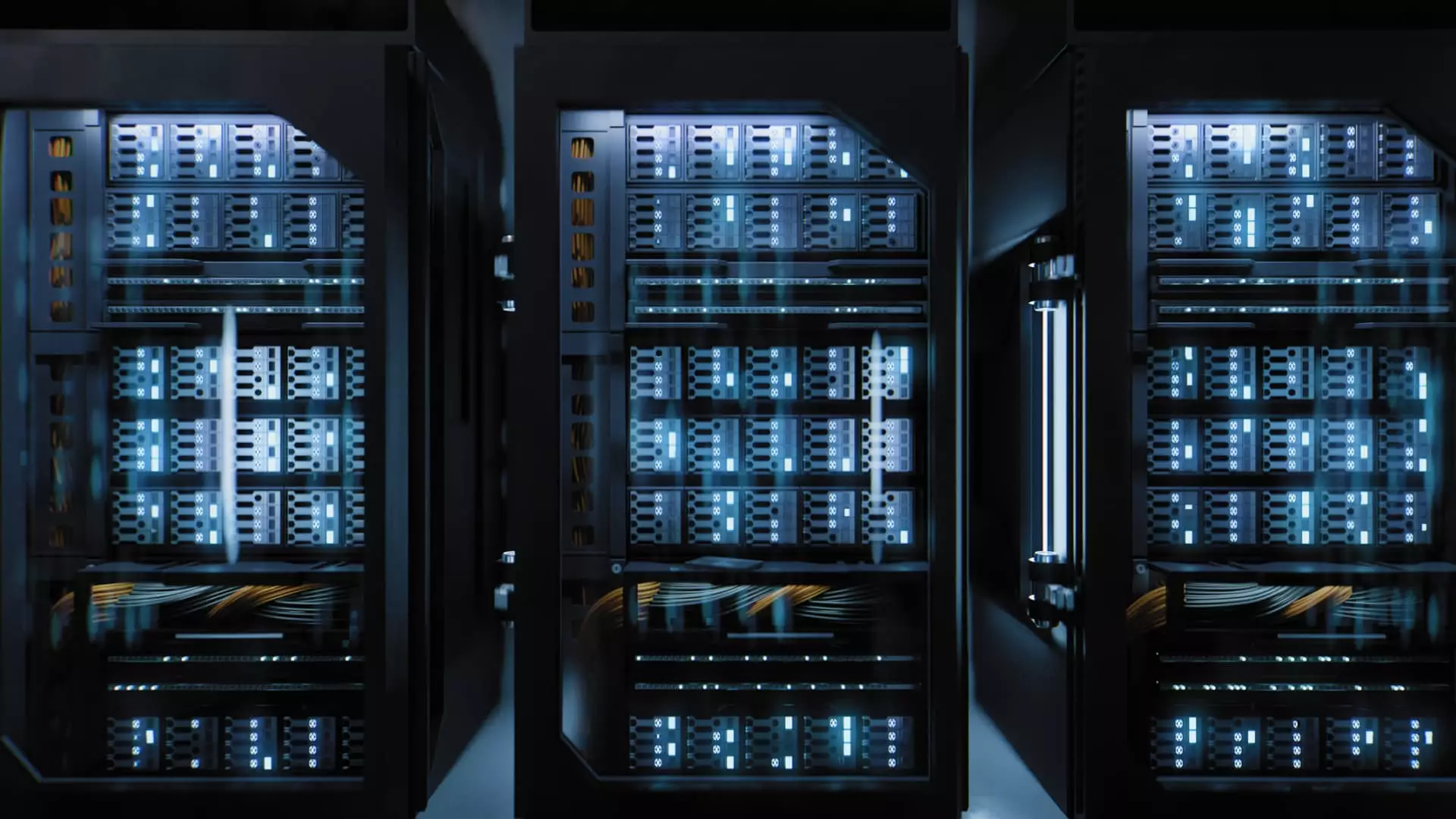The rapid growth of artificial intelligence (AI) is heralding a transformative shift within data centers, particularly in Europe, where developers are grappling with the pressing need to reduce water temperatures at energy-intensive facilities. This necessity arises from the increased power demands posed by advanced chips created by companies like Nvidia. As the AI sector continues to surge, a predicted 160% growth in the demand for data centers by 2030 emerges. However, this burgeoning requirement raises significant concerns about Europe’s aspirations for decarbonization, particularly as the specialized chips employed in AI applications threaten to exacerbate energy consumption levels within data centers.
At the core of this dilemma are high-powered chips, commonly known as graphics processing units (GPUs), which are indispensable for training and deploying complex AI models. These GPUs require high-density computing power, which, in turn, generates copious amounts of heat. To maintain optimal functioning, data centers must adopt innovative cooling solutions that use colder water to manage this heat effectively. According to Andrey Korolenko, chief product and infrastructure officer at Nebius, AI applications can consume upwards of 120 kilowatts of energy per square meter, equating to the energy consumption of 15 to 25 typical homes. As these energy-intensive chips proliferate, the resultant cooling requirements complicate the operational dynamics of existing data centers.
Michael Winterson, chair of the European Data Center Association (EUDCA), has expressed grave concerns about the trajectory of the AI industry juxtaposed against Europe’s climate ambitions. He cautions that the push to lower water temperatures in data centers threatens to revert the continent to unsustainable practices reminiscent of two decades ago. He views the AI landscape not just as a technological challenge but as a geopolitical race primarily driven by the American market, where factors like land rights and energy accessibility often fall to the wayside in favor of market dominance.
Embattled within this complex environment, European developers are receiving pressure from U.S. chip manufacturers to adapt their cooling systems, a move which Herbert Radlinger, managing director at NDC-GARBE, labels as “shocking.” Historically, there had been inclinations towards liquid cooling systems that allowed for handling elevated temperatures more effectively, yet the shift towards GPUs demands a reevaluation of these strategies.
With the European Commission striving towards a target of 11.7% reduced energy consumption by 2030, the surge in data center energy demands due to AI could severely undermine these objectives. Prior estimates anticipated a 28% rise in energy consumption from data centers by the end of this decade, but the infusion of AI could pump this up two to threefold in some member states. Winterson points out that the call for lowered water temperatures stands in stark contradiction to the recently established Energy Efficiency Directive, which mandates transparency in energy consumption from sizeable data centers.
The EUDCA has actively lobbied Brussels to amplify awareness regarding sustainability concerns, while firms like Schneider Electric engage with EU representatives to identify pragmatic solutions. Recent dialogues have revolved around exploring alternative power sources for AI-driven data centers and fostering closer collaboration with utility companies. Schneider Electric’s vice president, Steven Carlini, underscored that cooling systems represent the second-largest energy consumer within data centers, highlighting the intricate balance needed between maintaining energy efficiency and accommodating higher computing demands.
As the dialogue continues, various stakeholders are contemplating potential paths to a sustainable future amidst the escalating requirements of AI technologies. Companies utilizing Nvidia’s latest Blackwell GB200 super chip demand water temperatures between 20 to 24 degrees Celsius, a notable drop from the 30 to 32 degrees Celsius proposed by other industry players. Ferhan Gunen of Equinix indicates that a substantial number of their clients are eager to enhance server density, resulting in greater energy demands while complicating cooling requirements.
However, the rapid evolution of cooling technologies is providing opportunities for improvement. Liquid cooling methods are anticipated to necessitate initial reconfigurations, but they promise improved long-term cost-effectiveness and sustainability scenarios. As illustrated by Korolenko’s insights, optimizing power efficiency remains paramount to managing operational costs while scaling AI infrastructures.
As the data center sector in Europe maneuvers through these multifaceted challenges, stakeholders emphasize collaborative efforts toward achieving efficient, sustainable energy solutions that align with both technological advancements and robust environmental commitments. The quest for a balanced approach will be critical, as the confluence of AI and energy consumption continues to reshape the operational landscape within European data centers.


Leave a Reply